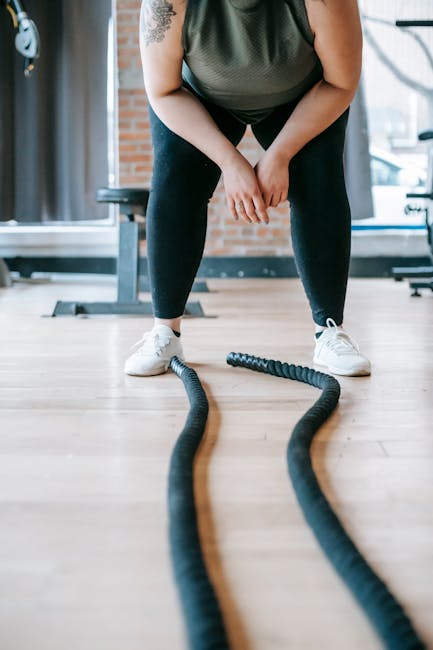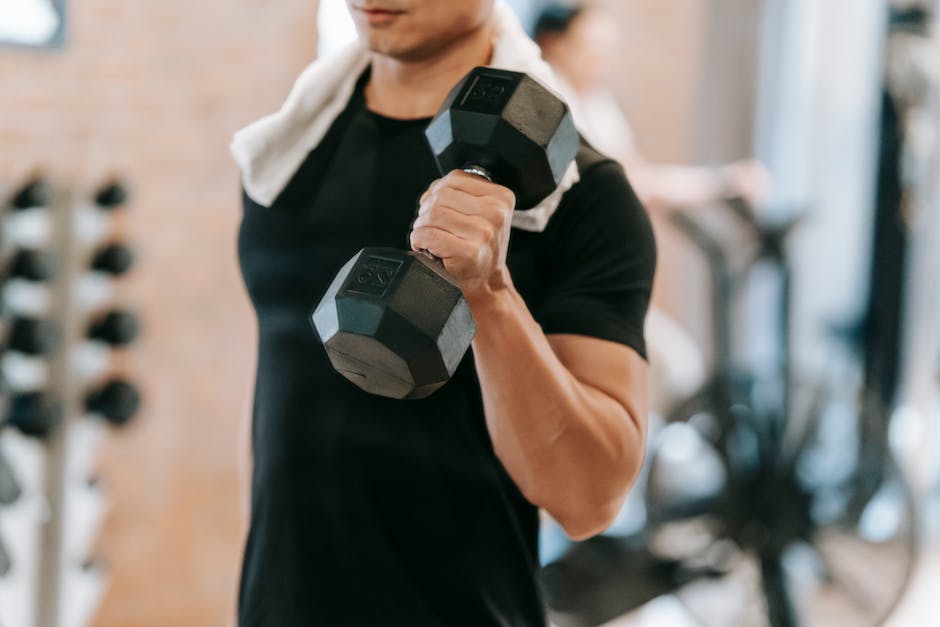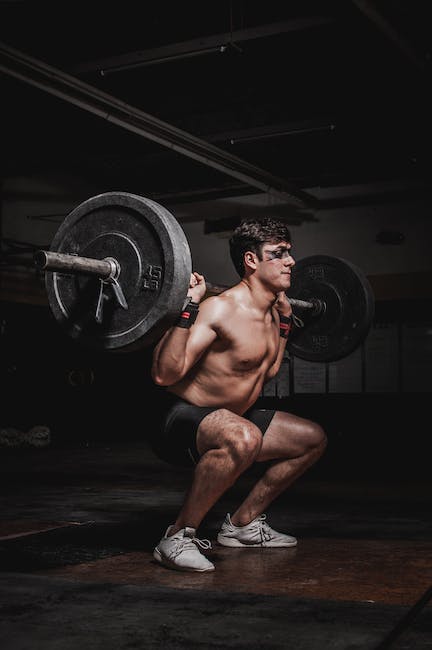Bulging biceps, chiseled chests, and rippling abs – this is what we imagine when we think of weightlifting. But what about the less glamorous aspects? We’re talking about the throbbing elbow pain, the swollen tendons, the constant reminder that you may have overdone it at the gym. Yes, my friends, we’re here to talk about the unsexy side of weightlifting: elbow tendonitis. So let’s grab some ice packs, brace ourselves for the pain, and take a closer look at how lifting weights can cause this pesky problem.
Contents
- 1 1. The Science Behind Elbow Tendonitis and Weight Lifting: An Overview
- 2 The Science Behind Elbow Tendonitis and Weight Lifting: An Overview
- 3 2. The Mechanics of Elbow Tendonitis: Understanding the Affected Areas
- 4 3. Exploring the Relationship Between Weight Lifting and Tendon Injuries
- 5 4. Risk Factors for Elbow Tendonitis in Weight Lifters: Pre-existing Conditions and Poor Technique
- 6 5. Prevention and Treatment: Strategies for Avoiding and Managing Elbow Tendonitis Off the Weight Room Floor
- 7 No Pain, No Gain?
1. The Science Behind Elbow Tendonitis and Weight Lifting: An Overview
The Science Behind Elbow Tendonitis and Weight Lifting: An Overview
Picture this: you’re at the gym, pumping iron like a boss. You’re feeling the burn, you’re making gains – life is good. But then, out of nowhere, you feel a pain in your elbow. At first, you try to ignore it, telling yourself that it’ll go away. But as you continue your workout, the pain only gets worse. Congratulations, my friend – you may have just earned yourself a one-way ticket to Elbow Tendonitisville.
So, what exactly is Elbow Tendonitis? Simply put, it’s inflammation of the tendons in your elbow. And what causes this pesky problem? Well, it turns out that weight lifting is one of the main culprits. When you lift weights, you’re putting a lot of strain on your tendons – and if you’re not lifting correctly or using proper form, you’re setting yourself up for some serious trouble.
- Tip #1: Warm up before you lift. This can help prevent injuries and reduce inflammation in your tendons.
- Tip #2: Don’t lift too much weight. As much as you want to be the Hulk, your tendons can only take so much. Don’t push yourself too hard!
- Tip #3: Use proper form. If you’re not sure how to lift correctly, ask a professional for help. You don’t want to end up looking like a fool (or hurting yourself) in front of everyone at the gym.
By following these tips and taking care of your tendons, you can still lift weights without worrying about Elbow Tendonitis. So go ahead, pump some iron – just make sure you’re doing it right.

2. The Mechanics of Elbow Tendonitis: Understanding the Affected Areas
Elbow tendonitis is like high school drama, it’s a pain in the butt and affects multiple areas. The two primary areas that are affected are the tendons and muscles. The tendons affected are the forearm extensor tendons and the muscles that receive the tendon are the wrist extensors. So, how does this all work?
First, the tendons connect the muscles to the bones. In this case, the forearm extensor tendons connect the muscles in the forearm to the elbow. When the muscles contract, the tendons pull on the bones and allow us to extend our wrist and fingers. However, when the tendons are overused or subjected to repetitive movements (like excessive texting or typing), they can become inflamed, irritated, and painful. Just like how getting ghosted by your crush can inflame your emotions, overusing your tendons can inflame your elbow.
Second, the wrist extensor muscles are the muscles that control the movement of our wrists and fingers, which makes them pretty important. When the tendons are irritated, it affects the ability of the muscles to properly move and function. Swelling in the tendons can cause pressure on the movement of the muscles, resulting in decreased range of motion and weakness. It’s like trying to finish a puzzle with a missing piece, frustrating and impossible.
In summary, elbow tendonitis affects the tendons and muscles in the forearm by causing inflammation and irritation. This inflammation can cause pressure on the movement of the wrist extensor muscles, resulting in decreased range of motion and pain. It’s like trying to navigate high school without being affected by drama, it’s challenging and usually ends with a few tears. Knowing the affected areas of elbow tendonitis is the first step to treating it effectively and getting back to scrolling on your phone like a pro.
3. Exploring the Relationship Between Weight Lifting and Tendon Injuries
Exploring the Relationship Between Weight Lifting and Tendon Injuries
Whoever said “no pain, no gain” probably never suffered from a tendon injury. As weightlifting becomes more popular, so does the incidence of tendon injuries. But why exactly does it happen? Let’s explore the correlation between pumping iron and hurting tendons.
For starters, when you lift weights, you’re basically asking your muscles to pick up heavy stuff over and over again. Your muscles adjust to the challenge by growing bigger and stronger, but unfortunately, your tendons don’t have that same capability. These babies don’t have the luxury of hypertrophy like your muscles, so they can only take so much before they give in to the strain.
Another reason why weightlifting and tendon injuries go together like peanut butter and jelly is improper technique. It’s easy to get caught up in the moment and let your form slip, but that’s a recipe for disaster. Not only are you not targeting the correct muscles, but you’re also placing excessive strain on your tendons. So, if you want to avoid becoming a victim of a tendon injury, remember to use proper form and check your ego at the door.
4. Risk Factors for Elbow Tendonitis in Weight Lifters: Pre-existing Conditions and Poor Technique
Let’s be real, weight lifting is not for the faint of heart. It requires a certain level of strength, dedication, and willingness to grunt like a wild animal in the gym. However, as with any physical activity, weight lifting is not without its risks – especially for your elbows. Here are some of the top risk factors for elbow tendonitis in weight lifters:
Pre-existing Conditions
If you already have some issues with your elbow joints, you might want to think twice before becoming the next Arnold Schwarzenegger. Things like arthritis, bursitis, and even carpal tunnel syndrome can increase your risk for developing elbow tendonitis. Of course, you could always just ignore your existing conditions and hope for the best. That seems to work for a lot of people, right?
Poor Technique
Now, I’m no weight lifting expert, but I do know that proper technique is kind of a big deal. You don’t want to be lifting weights all willy-nilly, or you might end up with some serious elbow pain. For example, if you’re doing a bicep curl, you want to make sure you’re not using your entire body to lift the weight. That’s just cheating, and it’s also a great way to strain your elbows. Stick to proper form, and you could avoid a lot of pain – well, at least elbow pain.
Other Factors
There are a few other things that can increase your risk for elbow tendonitis as a weight lifter. For example, if you’re using equipment that is too heavy or too small for your body, that could cause some problems. You should also be wary of overuse – if you’re lifting weights every single day, your elbows might be begging for a break. And, of course, there’s always the risk of just plain old bad luck. Sometimes, no matter what you do, your elbows are going to be screaming in pain. That’s just life.
5. Prevention and Treatment: Strategies for Avoiding and Managing Elbow Tendonitis Off the Weight Room Floor
Now that we’ve covered the causes and symptoms of elbow tendonitis, let’s dive into prevention and treatment strategies that can keep you off the weight room floor.
First and foremost, proper warm-up and cool-down routines can significantly decrease your risk of developing elbow tendonitis. Stretching your forearm muscles, rotating your wrists, and doing shoulder circles are just a few simple warm-up exercises that can help prepare your body for lifting.
Additionally, incorporating exercises that strengthen and stretch the forearm muscles can also be helpful in preventing elbow tendonitis. Some examples include wrist curls, reverse wrist curls, and gripping exercises using a grip trainer tool. Don’t underestimate the power of proper form in exercises, too! Proper posture and technique is key in avoiding injuries like elbow tendonitis.
No Pain, No Gain?
Well, folks, there you have it – lifting weights can result in elbow tendonitis. But before you throw in the towel on your dream of becoming the next Arnold Schwarzenegger or Serena Williams, remember that prevention is key. Keep an eye on your form, don’t overdo it and always warm up properly. Oh, and don’t forget to stretch – we know you want to pump iron, but your elbows will thank you for doing a little yoga too.








Leave A Comment